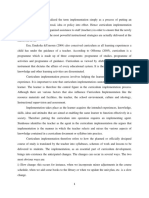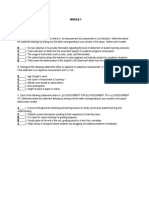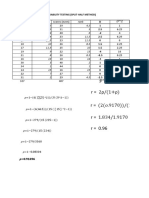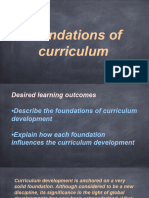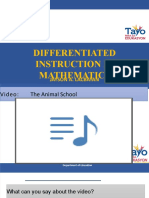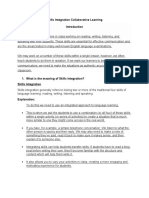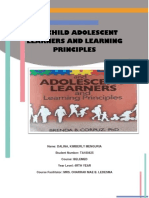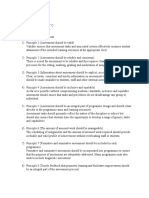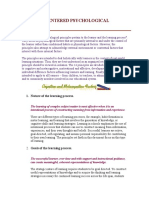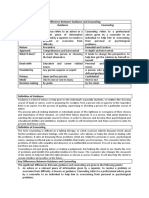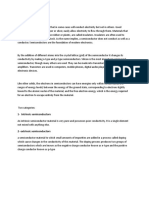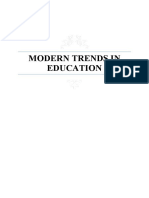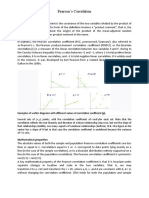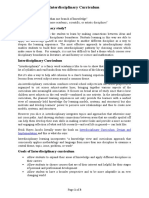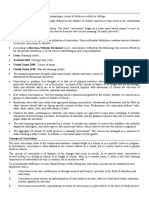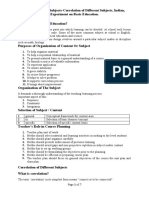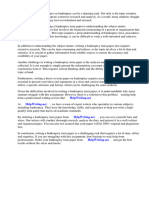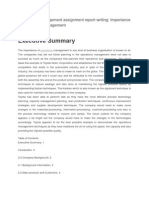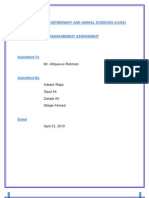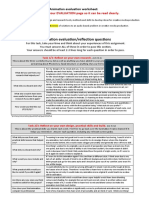Assessment &
Types of Assessment
Contents
No. Information Page
01 Assessment Definition 01
02 Internal Assessment 02
03 External Assessment 03
04 Formal Assessment 04
05 Informal Assessment 05
06 Terminal/Summative Assessment 06
07 Continuous/Formative Assessment 07
08 Standardized Assessment 08
09 Non-Standardized Assessment 09
10 Norm Referenced Assessment 10
11 Criterion Referenced Assessment 11
12 Convergent Assessment 12
13 Divergent Assessment 13
�Assessment
Etymology
According to Evangeline Harris Stefanakis (2002),
"The word assess comes from the Latin assidere, which means to sit beside.
Literally then, to assess means to sit beside the learner."
This word origin implies that in assessment the teacher sits with the learner and
assessment is something teachers do with and for students rather than to
students (Green, 1998).
Meaning
According to Merriam Webster Dictionary ‘Assessment’ has two meanings
1. “An amount that a person is officially required to pay” and
2. “The act of making a judgment about something”
Definitions
According to Fenton (1996),
"Assessment is the collection of relevant information that may be relied on for
making decisions.’
According to Merriam Webster Dictionary
The action or an instance of making a judgment about something.
According to Cambridge Dictionary
The act of judging or deciding the amount, value, quality, or importance of
something, or the judgment or decision that is made.
Functions of assessment
(Kratochvílová) defines 4 main and basic functions of assessment.
Informative
Corrective
Motivational
Developmental
(Kolář and Šikulová) have however added several other functions (44).
Motivational
Informative
Regulative
Formative
Prognostic
Differential
1
� Internal Assessment
Definition
Internal assessment refers to the process evaluating students or staffs by the people who
govern it.
Internal assessment is often called “Home examination”, “Class room test” or “Teacher
made test. There are the assessments for which all the arrangement are made by the teachers
of the same institution. Its main aim is to evaluate the progress of students in different
classes at different levels.
Characteristics
To evaluate the Mental Nourishment of students.
To estimate the student’s educational progress, speed of achieving and ability of learning.
It fulfills the objective of learning and retaining it for a long time.
Teacher evaluate his progress and his teaching methods and try to overcome his weakness.
Students and teacher both know the status of each student, who is leading and who is
lagging and how much.
Merits
It is direct, flexible and can easily be tied with the unit of instruction.
It is economical in terms of time and money and can be conducted frequently.
The student accepts it as part of teaching learning process and faces it without squirm or
fear.
Students can be engaged in study throughout the year.
Internal assessment helps to reduce anxiety and prevent nervous breakdown in students.
Demerits
Internal assessment tends to lead to indiscreet comparison of students.
It is not possible to apply internal evaluation in respect of thousands of private candidates.
Teacher can yield to local pressures.
Grades will vary from school and will not have uniform significance.
Pupils and their parents have lessor faith in internal evaluation.
Example
Daily Test
Weekly Test
Entrance Test or admission Test
the essays, group assignments, tests, etc.
2
� External Assessment
Definition
Refers to the examination, which is usually taken in the exam period once your lectures
and workshops are finished.
An assessment carried out by evaluators external to the facility/school/university.
Refers to all student testing developed and used by sources outside of the student's school.
Characteristics
Comparison of abilities.
To evaluate the progress of Institution
Competition.
Evaluation of teacher’s performance
Evaluation of objectives and curriculum.
Merits
helps in developing competent person from practicing.
justifies the decision as to whether they should move up to the next class or be awarded a
degree or diploma.
to detect and locate faults and problems which often are overseen by internal systems
a good device for motivating students.
provides Information which is critical to know whether the School system is delivering
good performance
Demerits
Incomplete evaluation of personality.
Unreliable results.
Exams without specific objectives.
It is time consuming.
Marking is not up to the standard.
Example
Comprehensive exam
3
� Formal Assessment
Definition
Which is planned in advance by the administration. Which lacks spontaneity.
Where students are aware that the task they are doing is for assessment purpose
Characteristics
Student are aware of what is being assessed by teacher
Encourages students in achieving the goal
Structured
Product Based
Knowledge testing
Merits
Perceived to be Fairer
Explicit criteria
Not biased
Drives Instruction – Teachers can target exact deficiencies.
Students are aware that they are being assessed so they behave accordingly
Demerits
The wording on the formal tests may cause students to answer incorrectly based on wording
alone and not knowledge of content.
Induces stress to the students because of the pressures put on formal testing.
Multiple choice questions may not show knowledge but rather the ability to eliminate a
select few answers and guess. This means the student may score high on assessment without
understanding the content.
Students’ scores are compared to other students and not compared to their previous
knowledge or abilities.
Students perform less well
Example
Chapter Test
Unit Examination
Final Course Examination
Term Papers
4
� Informal Assessment
Definition
More spontaneous, often and less obvious.
Unplanned observations and general feedback
those that are used to evaluate a student's own performance and progress individually. In
the classroom,
Mostly conducted when teacher observe a student having no attention into the class.
Characteristics
Useful for making valid and useful assessments of learners
Flexible
Continuous
Process Based
Progress measuring
Merits
More closely related to curriculum
More sensitive to small gains
Identify specific errors
Quick and focused
Retention of information
Demerits
Difficult to prepare meaningful questions
Response times may be extensive
Not really reliable and valid
Teacher just observe only a fraction of students
Teacher often do not provide adequate time to answer
Examples
checklist
Quizzes
Note taking
Dialogues
5
� Terminal (Final) Assessment
Definition
This is assessment that is carried out at the end of a course or major unit thereof.
The assessment which takes place at the end of the term (course).
Characteristics
Assesses learning as a complete whole.
Teachers extract important parts of the terminal study and make a format for students to
follow and answer it.
Assesses whether students have actually learned what they studied or rote memorized it.
Stimulates superior study methods.
Enhances ability to organize the knowledge, express opinion and show originality.
Merits
Simple to organize it in short space of time.
Time limited.
Student’s efficacy is measured (Can they write what they learned)
More emphasis on pure memory.
Decisive
Demerits
This is not constructive as it only gives the result of declaring whether the student is passed
or not.
If student fails, they shall have to reschedule the whole term.
Extremely stressful.
Students will have to study the complete work of the whole term.
Much more planning needed
Example
Submitting a major item or collection of work (eg a dissertation, thesis or portfolio).
2 years of study (11th, 12th).
Undergoing a practical or situational assessment.
6
� Continuous Assessment
Definition
The assessment which is scattered throughout the term.
This is assessment that is carried out on an on-going basis while students are actually
working through a course or major unit thereof.
Characteristics
Guidance oriented – collected information for guidance to the learner
Systematic – requires an operational plan
Comprehensive – different form of tests
Cumulative – Accumulated record of students help them to choose a right direction for
future studies
Motivational – Encourages students to learn faster and effectively
Merits
Encourages regular systematic study.
Indicates the performance of students
Reduces intense stress
Provides teachers early warning of any problem and weakness of students
Less emphasis on pure memory
Demerits
Students feel that they are continually under surveillance
Students may grossly over assessed.
Adversely effect the student and teacher relationship
Over concentration on written test
Lack of appropriate skills of teachers, test construction and administration.
Example
Short test
Class test
Home work/Assignments
Projects
7
� Standardized Assessment
Definition
Standardized – Pre-established Norms.
Am assessment which requires all test takers to answer the same question which is scored
in a consistent or standard manner
A standardized assessment is an assessment that is administered and scored in a consistent,
or “standard”, manner.
An assessment which has uniformity of procedure in scoring, administering and
interpreting the result.
Characteristic
Allows educators to compare students from different schools and different states from
across the country without variations in conditions.
To evaluate whether students have learned what they were supposed to learn
Allow fair comparisons among individual or groups of test takers
Obtains information on whether a program is achieving its desired outcomes.
This kind of tests is constructed by a panel of experts in testing after pre-planning and
determination.
Merits
A ready-made previously validated product that frees teachers from having to spend hours
creating a test.
Easy to administer
Results are quantifiable
Identify proficiency levels
Mostly scored via computers which saves times for the educator.
Unbiased
School-wide weakness and strengths are identifiable
Demerits
Frequently unrelated to the curriculum
Its results do no provide enough information for curricular modification if needed.
makes various teachers to ‘teach to the tests’ only. Such practice hinders the overall
learning potential of the student.
Standardized tests can't measure initiative, creativity, imagination, conceptual thinking
It measures only content knowledge
Example
Achievement test
Aptitude test
Toefl, IELTS
Psychological test, IQ test etc.
8
� Non-Standardized Assessment
Definition
Made by the teachers for use within a single classroom and with a set of students
They are not made to compare student with one another. Rather, they are made to
determine whether the student is learning or not.
An assessment for determining the amount of an information the student has learned
through the instruction
it gauges to measure the student’s knowledge of specific content.
Characteristics
To evaluate the progress of students in school
Such assessment varies from school to school and from teacher to teacher
Results are used for the teachers and students to improve.
Inexpensive
Instructions are simple, clear and motivating.
Merits
Simple to use and easy for the students to answer
Covers broad and wide area of objectives and content
Teachers can assess strength and weakness of students
Immediate feedback
Helps teacher to adopt better instructional methods
Demerits
They are either too short or too lengthy
They are usually hurriedly conducted
Supervision is not proper
Sometimes biased
Cause mental stress to students
Example
Mid-term exam
Short essay
Short answer
Completion
MCQs
9
� Norm Referenced Assessment
Definition
Norm-referenced assessments show where an individual student's performance lies in
relation to other students.
Compares each test taker’s score against others taking the same test and identifies if the
individual test taker did better or worse than others taking the same test.
Assessment designed to measure the growth in a student’s attainment and to compare his
level of attainment with the levels reached by other students and norm group.
An assessment designed to provide a measure of performance that is interpretable in terms
of an individual’s relative standing in a group
Designed to provide, a measure of performance that is interpretable in terms of an
individual’s relative standing in some known group is called norm-referenced test.
Assessment which is made as a way to rank or compare students
Characteristics
Relative - Compares performance between the learners (percentile)
To discriminate between high and low achievers.
Normal distribution of scores around a mean.
Measures general language abilities or proficiencies
To measure student’s achievement to curriculum-based skill.
Prepared for a particular grade level
Helps in forming homogeneous or heterogeneous class groups
Classifies achievement as above average, average or below average for a given grade.
Generally reported in the form or percentile rank, linear standard score, normalized
standard score and grade equivalent score.
Designed to sort and rank students "on the curve,"
Merits
Time efficient
Helps in the Measurement of abilities
Emphasize the discrimination among individuals
Measure broad skills areas sampled from variety of materials.
Administered in a standard manner
This assessment demonstrates the reliability and validity
Demerits
Students actual achievement may not be acknowledged
Students do not know where they stand until the course is over
Encourages poor evaluation practices
Its grading tells us nothing about standards
Example
Competitive exams. (CSS)
IQ test
10
� Criterion Referenced Assessment
Definition
Compares the test taker against set standards on a test score scale and is used to determine
the candidates’ mastery of content material or skill level
The performance of students or trainees is assessed against pre-determined criteria,
without regard to their performance relative to one another.
Characteristics
Absolute – Focuses on criteria (Percentage)
Measures specific objectives base language points
Developed to be representative of specified levels of ability or domains of content
Describe tasks students can perform
A student’s score is not influenced by other’s scores.
Merits
Scores indicate whether the student met the mastery criteria
Fosters learning
Focuses on individual’s competency
Motivates students to perform up to the standards
Students are expected to achieve realistic goals
Demerits
Cannot be used when class size is very low
Not all students can pass the given subject or course
Promotes competition among students rather than cooperation
Often become fairly similar to norm-referenced
Difficult to set a reasonable standard for students
Example
Driving test
Chapter test
Citizenship test
11
� Convergent Assessment
Definition
Those assessments which have one correct answer that the student should select.
A convergent assessment has only one correct response (per item).
Characteristics
Aims to discover whether the learner knows, understands or can do a pre-determined
thing.
(Can you do this...?) This approach is often characterized by tick-lists and can-do
statements
Closed ended questions to ascertain whether or not the learner knows, understands or can
do a predetermined thing.
Mostly used in written tests
Monitors student’s progress
Judgmental quantitative evaluation
Merits
Easier to evaluate or score
They tend to be quicker
They give more specific and directed feedback to individuals
Provide greater curricular coverage
Quickly and effectively highlight the area of weakness and gaps in students
Demerits
Limited in scope
Sometimes the scoring can be erroneous
More focused studying brings more stress to the students.
Mainly encourages rote memorization
Example
Objective type tests
Computerized objective test
12
� Divergent Assessment
Definition
Divergent assessments are those for which a range of answers or solutions might be
considered correct.
Divergent assessment appreciates a range of answers based on informed opinion and
analysis.
Characteristics
Aims to discover what the learner knows, understands or can do.
Open ended questions
Gives insight into the learner’s understanding
Descriptive rather than judgmental assessment
Merits
Constructivist view of learning
Helps teacher and student engage collaboratively
More oriented to student needs
Flexibility and accountability
Enhances cognitive skills (Logical)
Demerits
Time consuming
Resulting judgement exhibits poor reliability
Require greater marking skills
Require the teachers to have information at all aspects and be skilled
Extra theoretical
Example
essay tests
13

